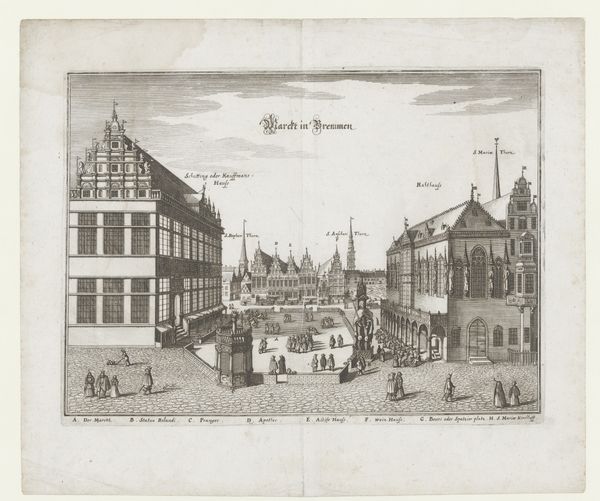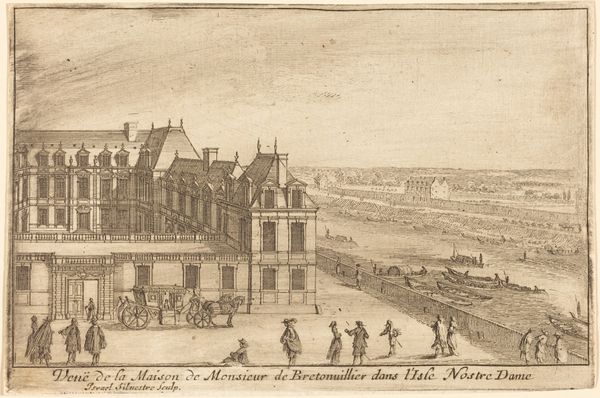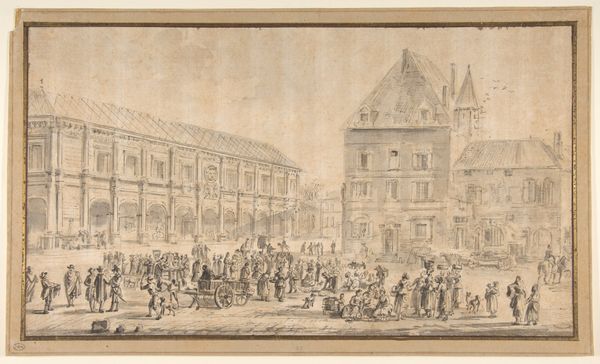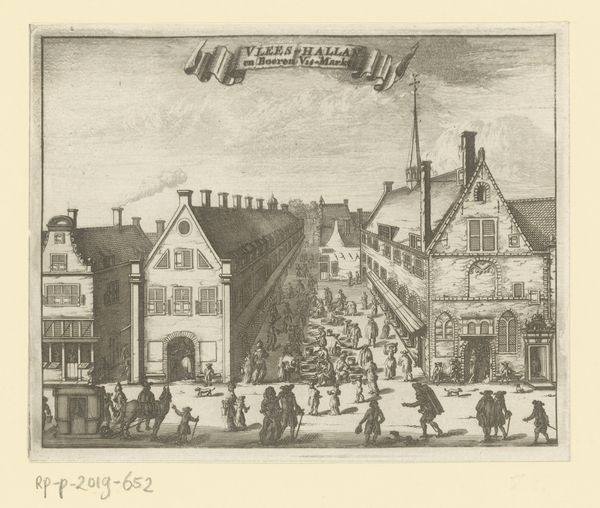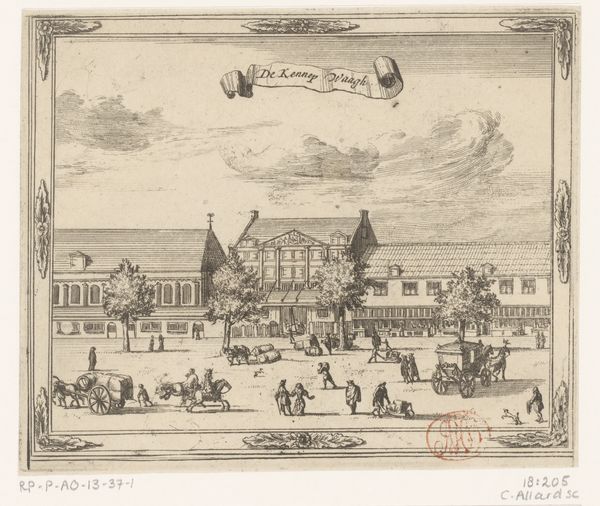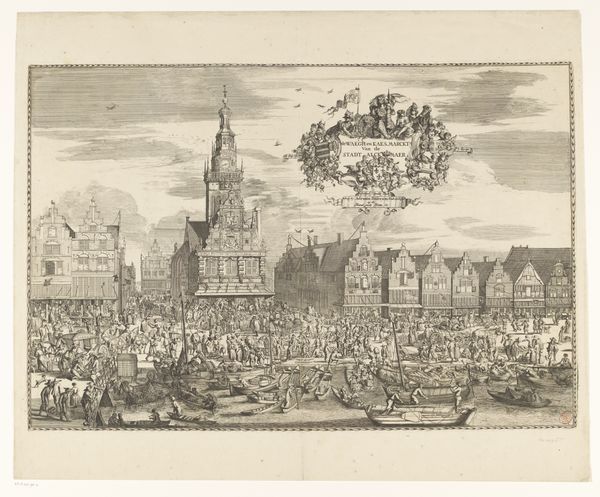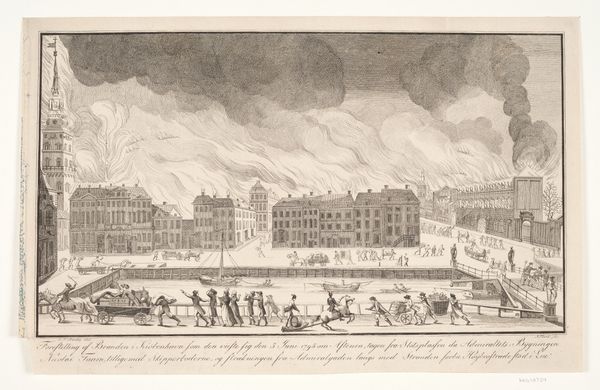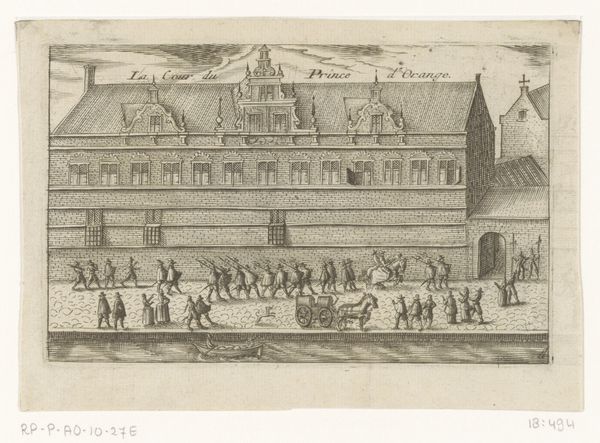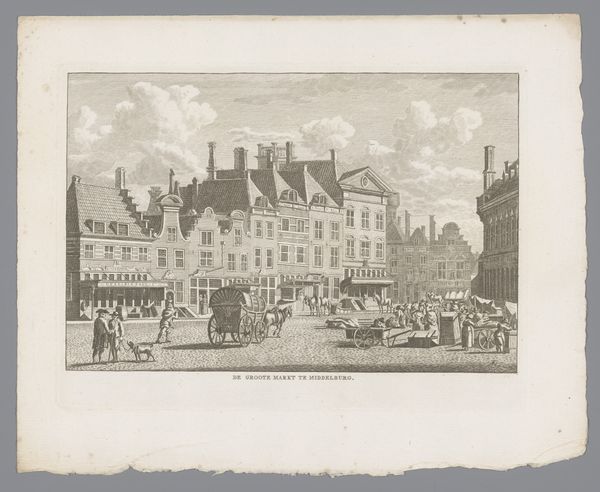
Plate 2: La Place Dauphine, on the coast of Pont Neuf, the equestrian statue of Louis XIII in center, seen from the back and numerous figures, from 'Various Figures' (Agréable diversité de figures) 1642
0:00
0:00
drawing, print, etching
#
drawing
#
baroque
# print
#
etching
#
cityscape
Dimensions: Sheet: 3 1/8 x 4 5/16 in. (7.9 x 10.9 cm)
Copyright: Public Domain
Stefano della Bella's etching captures the Place Dauphine in Paris, dominated by the equestrian statue of Louis XIII. This motif of the ruler on horseback is an ancient one, echoing the Roman emperors and their assertions of power. Consider the statue, not merely as a representation of a king, but as a symbol deeply embedded in the collective psyche. The horse, a universal symbol of virility and power, elevates the king, quite literally, above his subjects. This recalls the Marcus Aurelius statue in Rome, which itself revived the ancient Greek equestrian tradition. But here, the Renaissance ideal is reinterpreted, adapting the symbol to assert Bourbon authority. The statue, like all potent symbols, plays a role in our collective memory. It serves as a focal point for both admiration and, potentially, resentment. It’s a constant reminder of power dynamics, engaging viewers on a subconscious level. This symbol, the equestrian ruler, resurfaces throughout history, each time carrying echoes of the past, while also adapting to new political landscapes.
Comments
No comments
Be the first to comment and join the conversation on the ultimate creative platform.

